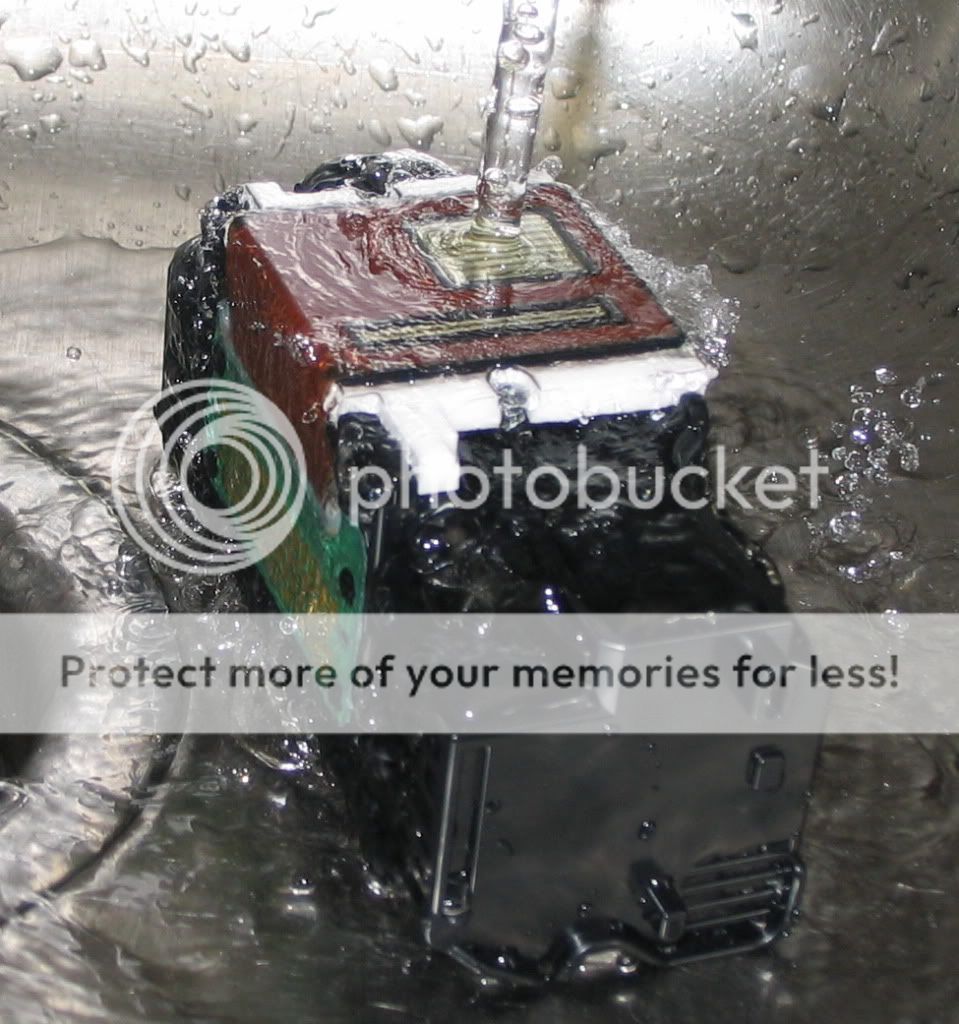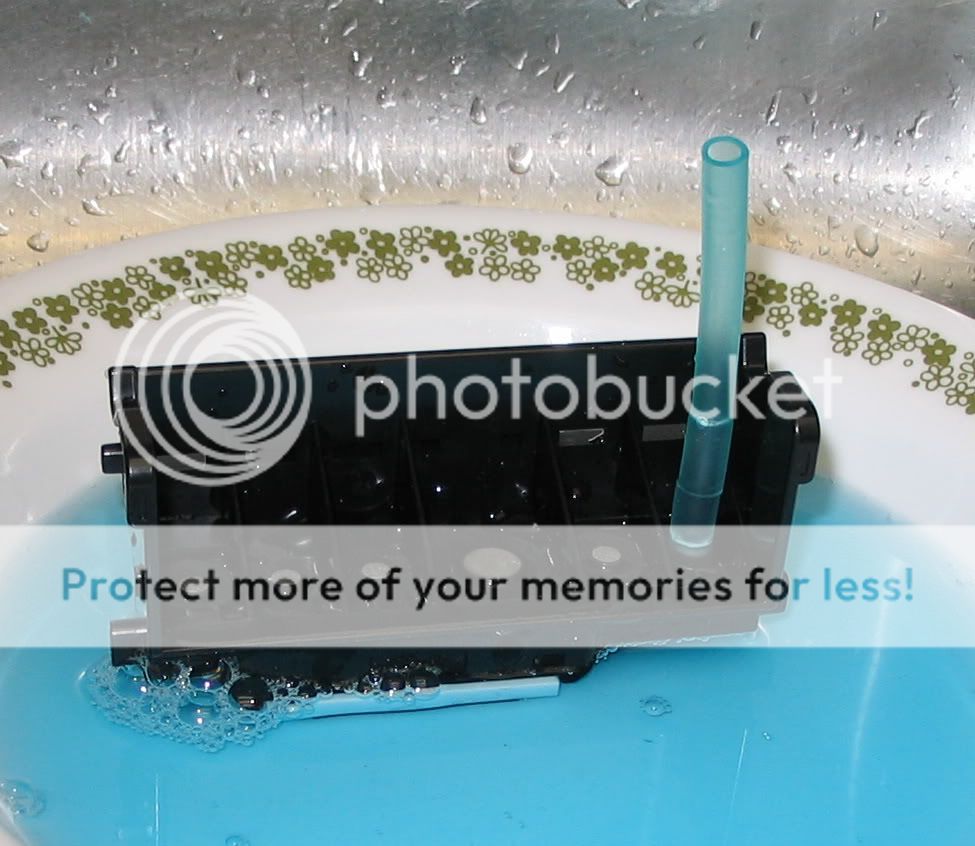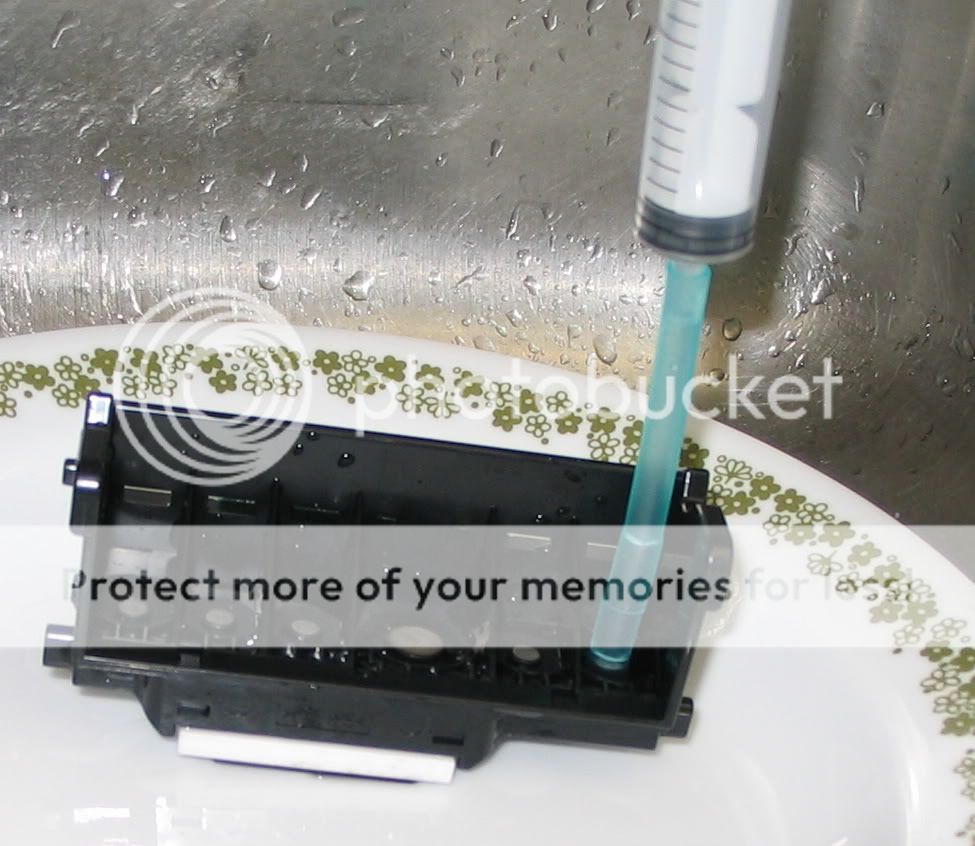This is some kind of adaptor that will connect your printhead to the hot tap. The printhead is flushed with a steady flow of water. You'll know when the printhead is clean, because Photofrost claims a perfect printhead will produce a nice and tidy fan of needle shaped rays of water.
-Step 1 is to soften up the clogs like most people here are used to: let the printhead sit in a Windex-like solution for several hours.
-Step 2 is to flush with the powerflush adaptor to blow out the clogs. I've tried step 1 a dozen times but never number 2.
Forcing water down the printhead with what essentially is a garden hose, looked like lunacy to me at first. But the narrator sounds like a knowledgable guy and especially the result with the fan of needle shaped water rays looks logical to me. Only a properly cleaned printhead will produce such a tidy pattern.
http://www.youtube.com/watch?v=tydjteB1xNU
http://www.photofrost.com/catalog_new/product_info.php?cPath=43&products_id=284
The Powerflush costs $50, but maybe you can make one yourself with the garden hose...? I wouldn't believe it if it weren't for the video. So any ideas: is this guy joking or is "power flushing" the way to go when cleaning printheads?
-Step 1 is to soften up the clogs like most people here are used to: let the printhead sit in a Windex-like solution for several hours.
-Step 2 is to flush with the powerflush adaptor to blow out the clogs. I've tried step 1 a dozen times but never number 2.
Forcing water down the printhead with what essentially is a garden hose, looked like lunacy to me at first. But the narrator sounds like a knowledgable guy and especially the result with the fan of needle shaped water rays looks logical to me. Only a properly cleaned printhead will produce such a tidy pattern.
http://www.youtube.com/watch?v=tydjteB1xNU
http://www.photofrost.com/catalog_new/product_info.php?cPath=43&products_id=284
The Powerflush costs $50, but maybe you can make one yourself with the garden hose...? I wouldn't believe it if it weren't for the video. So any ideas: is this guy joking or is "power flushing" the way to go when cleaning printheads?



